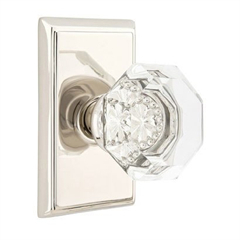Absolutely, door handles go beyond their functional purpose and can serve as significant design elements in architecture and interior design. Here’s a deeper look at how door handles contribute to aesthetics and design:
- Aesthetic Appeal: Door handles come in a variety of shapes, sizes, materials, and finishes. They can complement or contrast with the overall design theme of a space, adding a touch of elegance, modernity, rustic charm, or any other desired aesthetic.
- Architectural Integration: Door handles can be designed to seamlessly integrate with the architectural style of a building. For example, in a modern minimalist setting, sleek and simple door handles might be chosen, while in a more traditional environment, ornate handles can enhance the overall visual appeal.
- Focal Points: Unique and artistic door handles can serve as focal points in a room or space. They draw attention and become conversation starters, adding an element of surprise and delight for visitors.
- Materials and Texture: The choice of materials, such as polished metals, brushed finishes, leather wraps, or even unconventional materials like reclaimed wood or glass, adds texture and depth to the design of doors and surrounding areas.
- Personal Expression: Door handles offer an opportunity for personal expression in interior design. Homeowners and designers can choose handles that resonate with their personality and taste, making the space more reflective of their individual style.
- Consistency and Cohesion: Door handles can contribute to a sense of consistency and cohesion throughout a space. Using the same style or design of handles across different doors can create a harmonious visual flow.
- Cultural and Historical Significance: Some door handle designs are rooted in specific cultures or historical periods. Incorporating such handles can pay homage to a particular heritage or era, adding layers of depth to the design narrative.
- Ergonomics and Interaction: Beyond visual aesthetics, the tactile experience of interacting with a door handle also matters. A well-designed handle feels comfortable to grip and use, enhancing the overall user experience.
- Customization: Custom-designed door handles offer the opportunity to create something truly unique. Designers can collaborate with artisans to craft handles that align perfectly with the vision for a space.
- Brand Identity: In commercial spaces, door handles can reinforce a brand’s identity. Custom-designed handles can include logos or brand motifs, creating a memorable impression on visitors.
- Contrast and Drama: For a bold design statement, door handles can be used to create contrast or add an unexpected element. For instance, using a vibrant color or an oversized handle on a minimalist door can be visually striking.
Incorporating door handles as design elements requires thoughtful consideration of the overall design scheme, the intended atmosphere, and the preferences of the occupants. By paying attention to these details, designers and homeowners can transform a functional necessity into a captivating and integral part of the design narrative.








